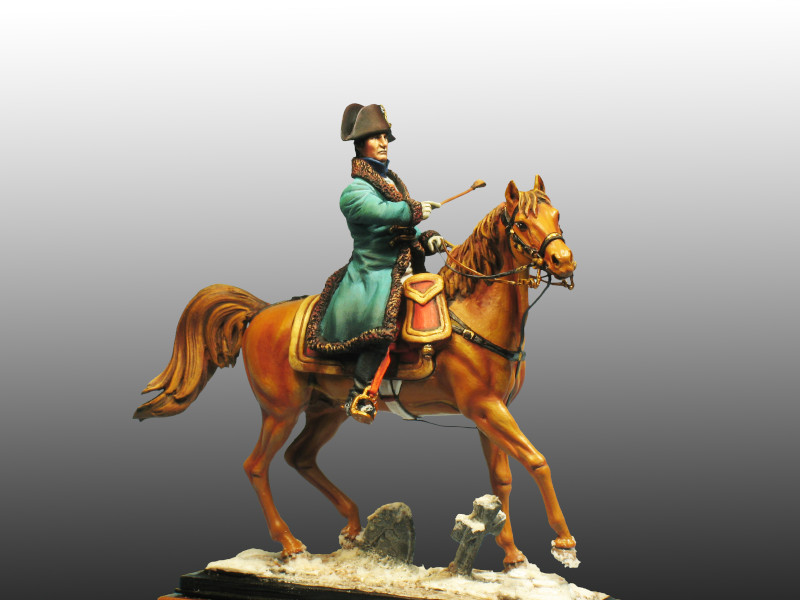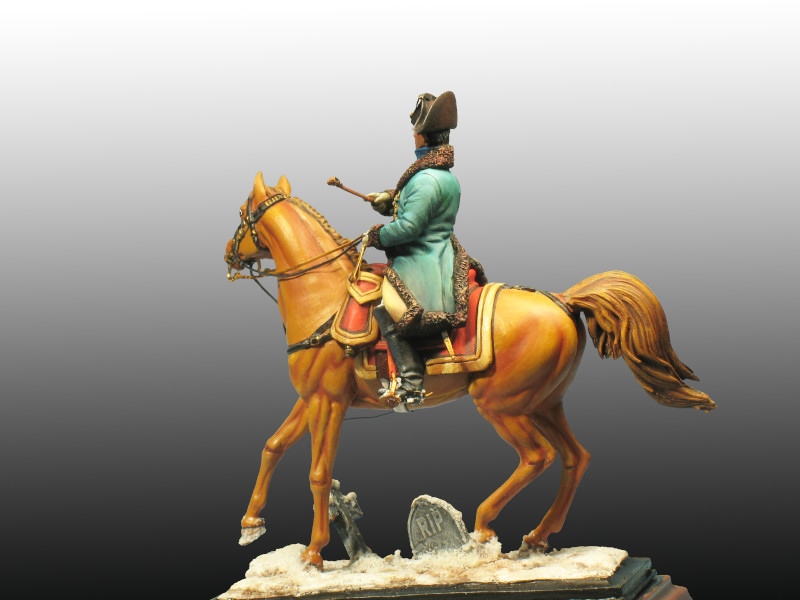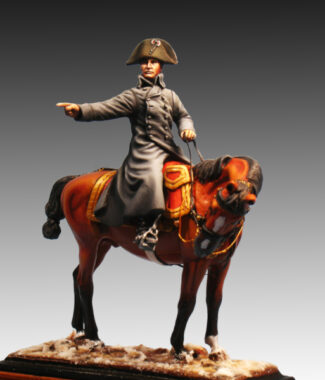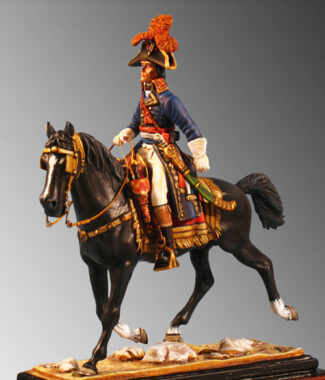You must be logged in to post a review.
Eylau – 1807
€68.00
Figure to assemble and paint
Ref.: 8 – NAP
Weight: 250 grs.
Material: White Metal
Number of Pieces: 15
Historical Review:
EYLAU – 1807. REF.: 08– NAP
The Battle of Eylau was part of the 1806-1807 campaign, in which France faced Russia and Prussia, whose main armies had already been annihilated in 1806 at the battles of Jena and Auerstedt. The French occupied Berlin and most of the Prussian fortresses, but their king refused to surrender.
The Russians held out through the autumn, giving ground and avoiding further fighting. They even gave up the Vistula line, allowing Murat to enter Warsaw, giving the Poles hope of regaining their freedom. Time was hard, and after the inconclusive battles of Pultusk and Golymin on 26 December, Napoleon ordered winter quarters. The Russians had another idea, and on 25 January 1807 they attacked the left of the French deployment and were repulsed.
Napoleon then decided to seize the moment and destroy the aggressive Slavs. On 3 February he finally managed to attack the main Russian army, commanded by Bennigsen, in the so-called Battle of Inkowo, but the engagement started late, and the Russians were able to escape under cover of night. After several minor encounters, the two armies finally met at Eylau on the 7th, possibly by chance. The fighting began to escalate and the Gauls held the town through the night. The real battle would begin at dawn.
About 45,000 Frenchmen were in the field at the time, and by the end of the day they had amassed some 75,000. The Russians mustered 67,000, but a Prussian contingent raised their numbers to equal those of their enemies. The difference was artillery, with 460 guns to about 200 French.
The battle began with an artillery duel centred on Eylau at about 8am. An hour later Soult advanced the French left, to divert attention from his right, where Davout was expected to take the field. Until then Napoleon decided to reinforce his right by sending Saint-Hilaire and Augereau. The latter’s soldiers, blinded by a snowstorm, strayed to his left, coming under fire first from his own artillery, then from Russian artillery. Bennigsen then attacked Augereau’s corps, which retreated in panic, having lost over 5000 of its 9000 men.
The Russians even penetrated as far as Eylau, where Napoleon was. The Imperial Guard had to go into action to prevent their capture: the French centre was broken. The Corsican then ordered, to restore the situation, the legendary cavalry charge commanded by Murat: 7,300 dragoons, 1,900 cuirassiers and 1,500 guardsmen joined Murat’s call, seizing the centre of the field and defeating there the Russian horsemen sent to stop them. They managed to break through the Slavic centre and seize the large 70-piece battery shelling Eylau.
Finally, Murat had to break contact, having more than fulfilled his mission of stopping the Russian momentum in the centre and releasing the pressure on the entire French line until the arrival of Davout, who arrived in good time at about 13:00. The marshal pushed the Russian left with his usual perseverance, coming close to giving way and winning the battle. At this point Lestocq’s Prussians were sent to the exposed flank, denying Davout the glory of completing his exploit.
Only Ney’s arrival at 7pm prevented the Russians from counterattacking. Three hours later, as night fell, the battle came to an end. The Russians were the ones who then left the field, so we can call it a narrow French victory.
Imperial casualties were probably 25,000, Allied casualties perhaps less than 20,000. Both figures are unusual for battles of the period, so the Battle of Eylau has remained one of the most tragic of all the Napoleonic Wars.
Napoleon is depicted in the paintings of Antoine-Jean Gros, Charles Meynier, Alexander Averyanov, etc., as well as illustrations by Job and Patrice Courcelle.








Reviews
There are no reviews yet.